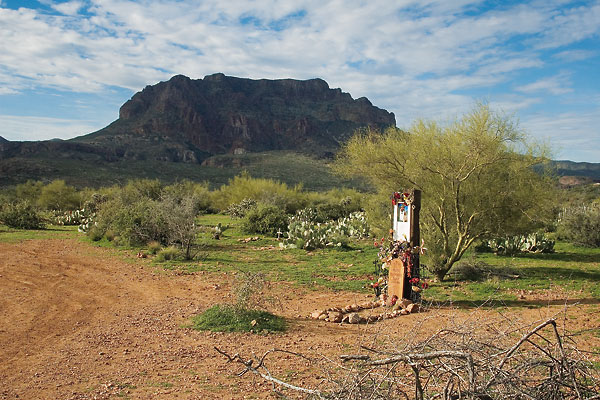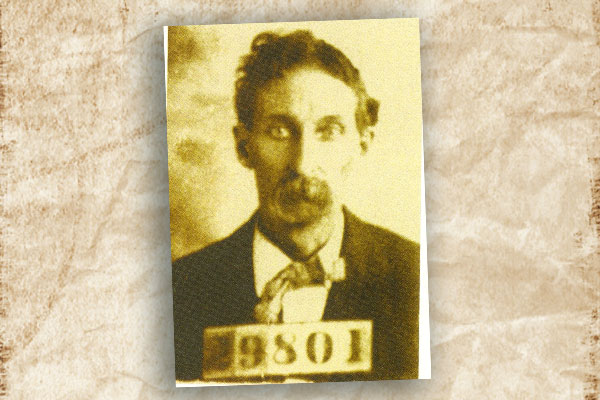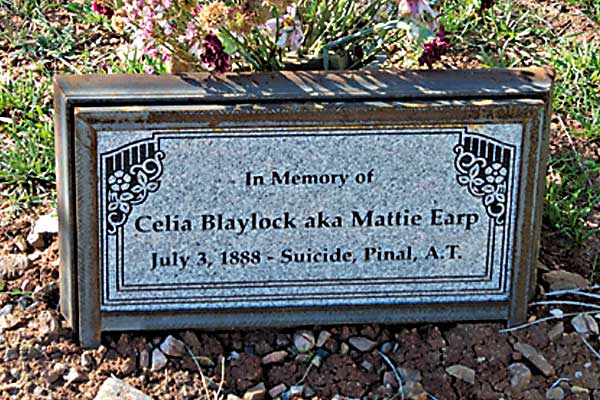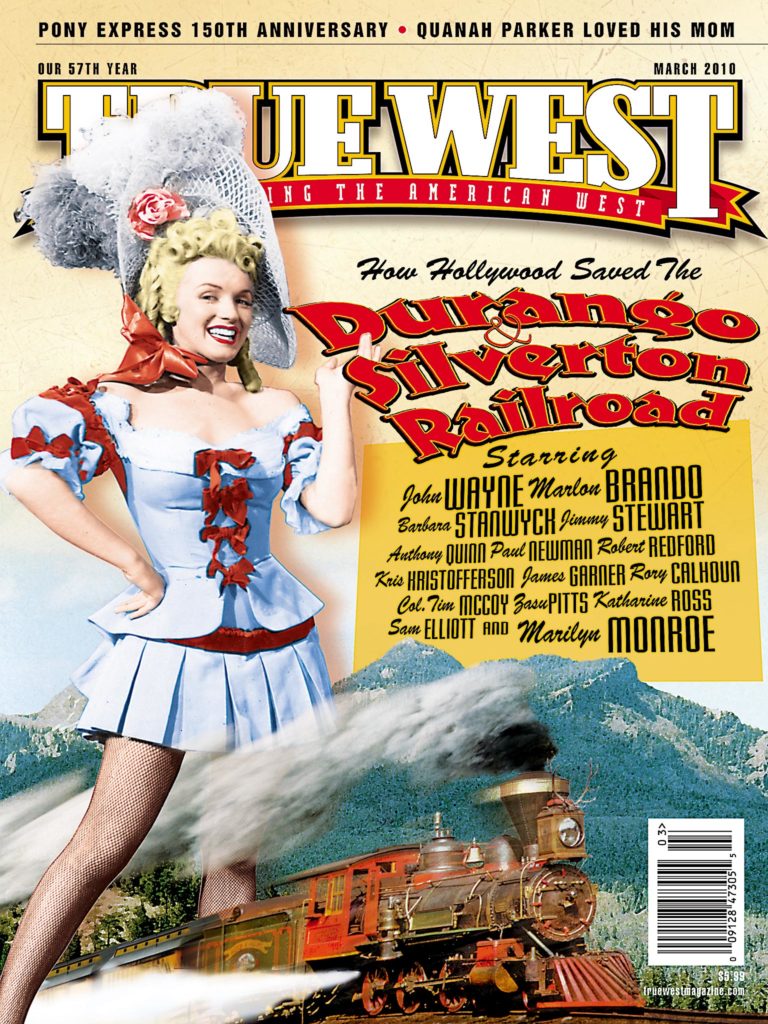
You may know Celia Ann Blaylock-Mattie-from movies such as Tombstone or Wyatt Earp. She’s the drugged out, paranoid shrew who tried the patience of her legendary common-law husband Wyatt Earp.
Now she’s at the center of a cemetery controversy in Pinal County, Arizona—over a grave that may not even be hers!
Mattie Earp ended up somewhere in the Old Pinal Cemetery after she took a fatal dose of laudanum to ease her pain.
In reality, we don’t know much about Mattie. It’s believed she was born in Iowa in 1850 and headed West at age 16. She probably worked as a prostitute as she shifted from town to town. We don’t know exactly when or where she and Wyatt got together. We don’t know if she was hooked on drugs while she was in Tombstone. We don’t know exactly when or how she and Wyatt broke up.
We do know that Josie Marcus showed up and stole Wyatt’s love and affection away. Mattie went back to her nomadic lifestyle around 1882, again resorting to prostitution to get by. It was a downhill existence. She ended up in the mining boomtown of Pinal.
On July 3, 1888—losing her looks and her prospects and whatever hope an aging whore had—she killed herself with an overdose of laudanum. The next day, Independence Day, she was buried in the Pinal Cemetery.
It’s unclear if her grave was marked.
For the most part, Mattie was forgotten. Wyatt and Josie never spoke of her. The important bio Wyatt Earp: Frontier Marshal made no mention of her. For sure, former Tombstone residents knew about her; occasionally she was briefly mentioned in print. But it wasn’t until the 1960s that Mattie was included in the Earp story—and even then, the facts were obscured by ignorance and fantasy.
Somebody put up a simple marker for her at the cemetery in the 1950s, but it probably wasn’t at the exact spot of her grave. Someone stole that marker in the ’70s. In 1995, another somebody erected an imitation 19th-century headstone at this cemetery located on National Forest Service (NFS) property. The NFS removed it because the marker had been put up without government approval, a process that would have ensured archaeological sites at the cemetery were not damaged—even by a marker.
Within a few months, a larger memorial—a shrine, really—appeared at the same spot. This time, the NFS decided to leave it, fearing that an even bigger marker would sprout up if they took the current one down.
So that one remained, attracting some curious visitors to the area.
Until last summer. When someone began welding an iron fence around Mattie’s marker, a ticked off NFS worker—ignoring orders—decided he’d had enough and removed the shrine. The NFS was not pleased, but for now, it has decided to keep out any replacements.
Enter the Arizona Pioneer & Cemetery Research Project (APCRP), a controversial group that, among other things, searches for unmarked graves in cemeteries. That’s touchy enough, but members do it via dowsing, a process that involves a person walking through the cemetery with a metal rod (usually made from coat hangers) in each hand. Supposedly, when the two rods cross each other, a grave has been located. Then the dowser marks the grave, usually with whatever is at hand, but sometimes they construct a monument.
As you might guess, most scientists don’t buy it. More important, archaeologists and preservationists worry about the damage done by such activity in historic cemeteries—and that does not even touch on the legal issues.
The Pinal Cemetery is among the cemeteries where APCRP members go dowsing. When they noticed the Mattie marker was missing, they raised a storm of protest—posting blogs and calling and sending letters to the forest service.
Forest Service officials met with APCRP reps last November, but in spite of the forest service’s best efforts, the dowsers refused to see how their activities were disturbing the cemetery. No consensus was reached.
In the meantime, the True West Preservation Society is working on a proposal to protect and interpret the cemetery, which will be a component in a Legend of Superior Trail project in the not-so-distant future. And yes, the plan includes erecting an approved marker that places Mattie Earp in the context of the larger history of the Pinal area.
No matter what, you can bet Mattie’s true grave site will remain as it has been to date—unknown.





